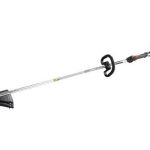Crabgrass refers to a weed that grows in areas with overabundant sun and insufficient water. The weed originated in Europe, but you can now find it in the United States, South America, and even Asia and Africa. It is easily recognizable for its thin leaves and branchlike shape, as evidenced by the photo above. Because crabgrass offers neither functional nor aesthetic benefits, it is widely despised and measures should be taken to prevent it. To be sure, you want to be on the lookout for crabgrass because it carries a number of harmful effects, most notably acting as a receptor site for viruses that can damage your grass. In this post, we review the causes for crabgrass, as well as some lawn care tips for removing it should it appear on your lawn.
What makes crabgrass appear?
One of the most important things to remember about crabgrass is that it loves warm weather. It begins to germinate when the soil temperature reaches about 60 degrees. Therefore, it loves a full sun and preys on lawns that are thin. As inconvenient as crabgrass is, it is important to remember that it is an annual grass (it will go away when the cold weather arrives in the fall), so if your lawn suffers from it during one summer there is no guarantee that it will reappear.
How does one remove and prevent crabgrass?
There are many methods for preventing or getting rid of crabgrass. First, do not scalp the lawn. If your grass is too short, it will become thin and particularly susceptible to crabgrass. Make sure that your lawn does not dry out, but you also don’t want to overwater, either. Basically, you need your grass to be rich and healthy. It is also a good idea to apply herbicides between April and May (before the really warm weather arrives.) Finally, mulching the soil is an effective procedure, as this will prevent the crabgrass from germinating as it reduces the impact of the sun.
Note: for an in-depth look at crabgrass, visit this site.







